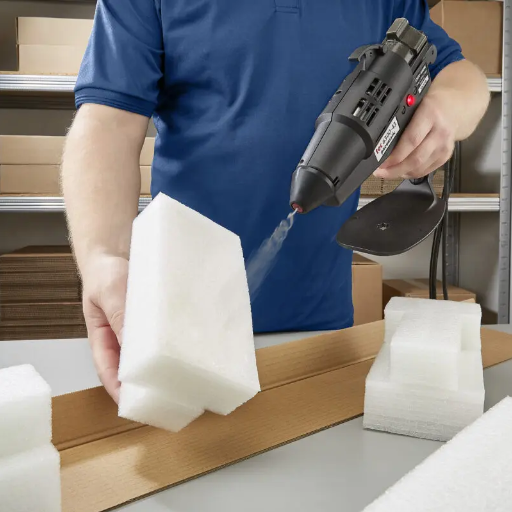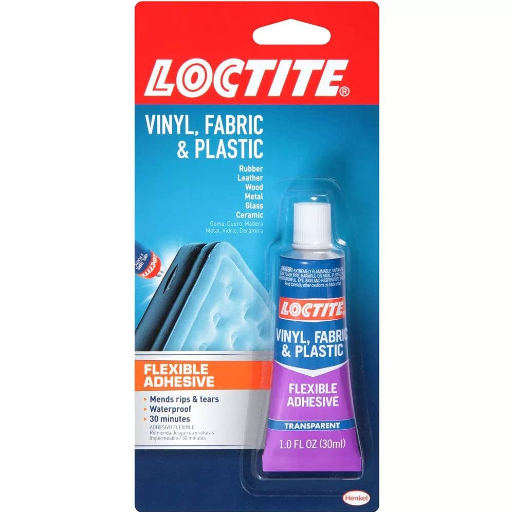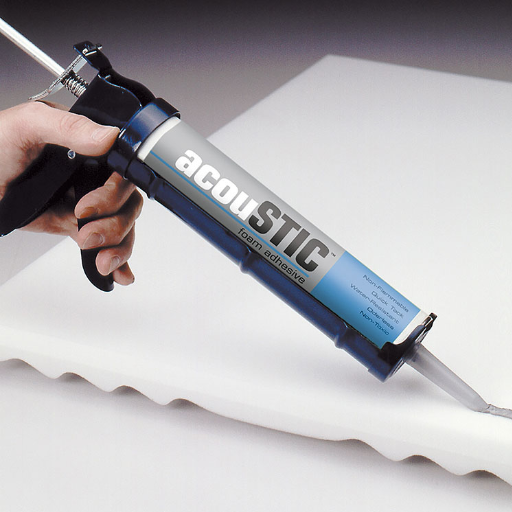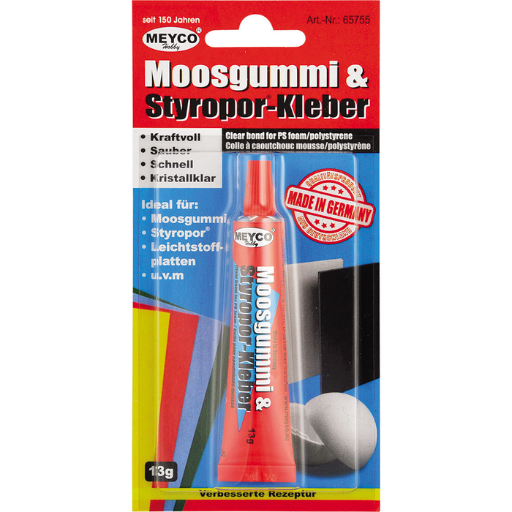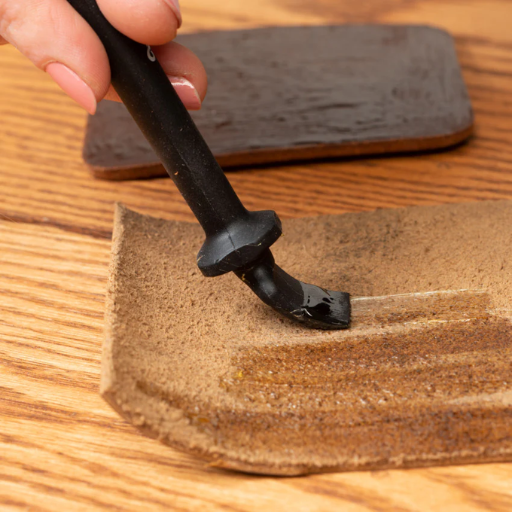The more popular brands such as Loctite and Gorilla Glue, compete at the top of the list when it comes to effortless strong adhesive glues. The market is furnished with a variety of choices, so one’s ability to select an ideal product can be particularly difficult. It can prove to be even more challenging when precise and dependable plastic adhesives with durable, lasting bonds are considered. While both brands claim to be the best at multi-purpose adhesives, they each have their specialties and limitations such as; differences in formulation, effectiveness on various plastics, curing times, and methods of application. This blog post will cover all key elements regarding the performance of Loctite and Gorilla Glue in terms of plastic compatibility, ease of use, adhesion strength, durability, and overall reliability. Readers will thank us later when they find this blog for guiding them to the right choice that fits their requirements for effective plastic repairs.
What Are the Key Differences Between Loctite and Gorilla Glue for Plastic?

In terms of adhesion properties, both Loctite and Gorilla Glue have notable discrepancies. Loctite Super Glue, through the use of cyanoacrylate, guarantees an instant and firm bond for smaller or more delicate plastic repairs. Gorilla Glue has a polyurethane-based formula which cures and expands, allowing it to excel in bonding larger surface areas with less precision.
Loctite works best with rigid plastics such as PVC and ABS, due to its cyanoacrylate formulation bonding well chemically. However, flexible plastics such as polypropylene require a specific primer, or it may prove difficult. Gorilla Glue offers a broader range of adaptability when bonding with plastic, but is generally weaker on non porous materials unless the surfaces are prepped properly.
Loctite Super Glue has several supports free steps for application, like no clamping, and rapid curing, typically in seconds. Gorilla Glue, on the other hand, needs moisture to activate, clamping for 1-2 hours, and can take up to 24 hours to fully cure which––less ideal for quick repairs.
Both adhesives have benefits for various types of plastic repairs with diverse demands for strength. Choosing the right product often depends on the project as well as environmental factors.
Chemical Composition: Cyanoacrylate vs Polyurethane Adhesive
Cyanoacrylates are super glues that cure rapidly through the polymerization process and bond when water molecules are present. Due to its strong and rigid connection, super glues work best when applying small and precise hits on non-porous surfaces, metal, and certain plastics. These bonds, however, pose a significant problem for flexible or porous materials. Super glues reduced flexibility renders them relatively useless for wider application spanning varying materials.
On the contrary, the Polyurethane adhesives are made from isocyanates and polyols that react together to form a flexible and durable polymer structure. They sustain great damage of moisture, temperature changes, and environmental stress unlike cyanoacrylate, which makes them ideal for outside and inside uses. Polyurethane adhesives have an upper hand in gaps filling, being able to a whole lot more materials, and remaining bendable, this guarantees that during dynamic load conditions, they remain strong. This type of adhesive cures slowly, however it provides unmatched flexibility for demanding projects, particularly large scale or outdoor projects.
Bond Strength on Different Types of Plastic
Due to the surface energy and chemical structure of different materials, their adhesive bond strength can vary drastically. Polymeric molecules such as ABS and polycarbonate belong to high-energy group of plastics and so they provide very good adhesion due to their polar character and enhanced mechanochemical bonding, while in plastics such as polypropylene (PP) and polyethylene (PE) which are classed as low-energy materials, inherent adhesive resistance is dominant. In addition, these surfaces require certain treatments such as flame treatment, plasma treatment or even paint primers to aid in adhesion to the nonpolar bonds.
Stronger rigid plastics like ABS benefit from Polyurethane adhesives while other low energy plastics are best with pre-treated surfaces and cyanoacrylates or even epoxy resins. For maximum bond strength, extensive care should be provided while considering how delicate the specific plastic substrate is, especially in situations where heavy structural loads or exposure to the elements is present.
Which Glue Works Best for Specific Plastic Repair Jobs?

The optimal adhesive for a particular plastic repair task is contingent on the nature of the plastic and the requirements of the task. For general maintenance on rigid plastics such as ABS, acrylic-based solvent cements or plastic-specific epoxies will suffice. For flexible polyurethanes or specialized vinyl glues that are more pliable offer better strength against cohesive failure. In the case of repairs involving low-energy plastics like polyethylene or polypropylene, the use of an epoxy adhesive is only effective after surface pre-treatment processes such as flame or solvent treatment to ensure adequate bond longevity. As with other adhesives, verify the bond’s service temperature and environmental resistance for the needs of the repair task.
Loctite Super Glue for Rigid Plastic Surfaces
Loctite Super Glue precisely applies to surfaces and bonds in super quick time making it ideal for super plastic surfaces which are rigid. The glue is versatile since it works on various types of plastic including cyclic acetylate as it hydrolyzes super fast in moisture from atmosphere. With low-energy plastics such as polyethylene and propylene, bond strength can be improved using an adhesive primer or cyanoacrylate activator with surface treatment. Loctite formulaitons are also designed to withstand temperature extremes and environmental impacts, ensuring bonds are durable Tesas’s Super Glue is recommended for providing refined surface treatment to resit abrasion. For effective results, follow manufacturers’ instruction for surface preparation.
When Gorilla Glue Outperforms on Porous Plastic Materials
Because of the polyurethane composition that reacts with moisture, porous plastic materials bond very well with Gorilla Glue. Unlike cyanoacrylate glues, its unique foming action fills gaps and irregularities, making it particularly effective on heavily textured or rough plastics. In addition to being effective, this product is also very dependable, staying secured under water, heat, and environmental conditions. Although, for the best results, surfaces must be cleaned and slightly moistened with water beforehand to ensure the best outcomes. To improve the chance of bonds made being effective, it is recommended to follow the instructions provided with the glue, especially when the materials being used are subject to high stress or varying conditions.
Best Glue for Plastic-to-Other-Material Bonding
Selecting the proper adhesive while bonding plastic to other materials is essential to ensure long lasting durability and high strength connections. According to numerous journals available on the internet, experts prefer epoxy adhesives to have unmatched versatility and tensile strength. Instructors and fellows at Creighton university recommend J-B Weld Plastic Bonder and Devcon Plastic Welder for their ease of use in polymers and metals like wood. For most people, super glue works like magic when it comes to quick repairs and small projects since he claims it dries super quickly. Loctite Super Glue Claims to work on nonporous surfaces which is an added advantage. Some people prefer polyurethane adhesives too. Gorilla Glue is one of them since it works well on porous surfaces. However, it is essential to note that adequate surface prep along with clamping during curing time is a must. Lastly, always check the compatibility of brand’s materials with the project before starting the work.
How Do Loctite and Gorilla Glue Gel Formulations Compare?

The Loctite precision gel retains its glyphs and provides bonds with great strength across plastics, rubbers, and metals. Thick gels enable non-drip suturing, making them ideal for vertical surfaces. In contrast, Gorilla Glue Gel Formulations focuses on a wider range of applications, being able to bond porous and nonporous materials such as wood, ceramics, and foam. Their gels are more activatable under humid conditions and are more rigid, fitting the need for outdoors or heavy-duty undertakings. Both provide reliable performance, albeit with differences in material types and environmental conditions.
Loctite Ultra Gel vs Gorilla Super Glue Gel
Comparing Loctite Ultra Gel and Gorilla Super Glue Gel shows us that ingredients, application, and performance differ greatly. For instance, Loctite Ultra Gel is made with a rubber-toughened blend which makes it more impact resistant and flexible. As result, it is more suitable for applications that undergo stress or vibration. The applicators ensure precision as they can dispense exact amounts even in tight spots and works with various materials such as metals, rubbers, and ceramics and plastics.
On the other hand, Gorilla Super Glue Gel contains a thicker gel that does not drip, making it ideal for vertical and overhead uses. It has a moisture-activated bond that is exceptionally strong on both porous and non-porous materials such as wood and foam. Gorilla’s gel formulation is also appropriate for outdoor applications because of its temperature and water resistance.
In the end, the difference between Loctite Ultra Gel and Gorilla Super Glue Gel largely comes down to specific task needs. If the job requires precision and the ability to withstand stress, then Loctite is the best option. Otherwise, for those who need to work in difficult positions where water or temperature resistance is required, Gorilla is the best.
Gel Superglue Benefits for Vertical Plastic Surfaces
The use of gel superglues on vertical plastic surfaces is bound to yield some of the best results as superglues have unique benefits. Their thicker formulation ensures reduced dripping and improves precision during application, making them ideal for awkward angles and upright positions. The gel consistency allows for better control and targeted placement, minimizing excess adhesive and ensuring a cleaner finish. Moreover, gel superglue bonds strongly with non-porous substrates like plastic, which is due to its cohesive strength. Additionally, its quick curing time improves the ease of use by completing tasks efficiently without waiting long periods of time. Because of these reasons, gel superglues are preferred when dealing with complex challenging vertical surface projects.
When to Choose Gel vs Regular Super Glue for Plastic
While choosing between gel and regular super glue for plastic, the application and material properties must be considered. Caulking gel super glue works for vertical, angled, or uneven surfaces because its thick consistency keeps it from running. Super gel will work on non-porous plastics like ABS or PVC where the precision of the bond is critical. Regular super glue, on the other hand, has a lower viscosity which is more suited for areas that require quick access like smooth, flat surfaces. Regular super glue also works better for small permeable gaps between tight fitting plastic parts. While regular super glue can cure faster on a number of surfaces, it can be less controllable on complex projects. Knowing the distinctions will guide one on which adhesive to use.
What Factors Should I Consider When Choosing Between These Adhesives?

When choosing between gel and regular superglue for a project, consider the following factors:
- Surface Type: 1Gel glue works best with porous or uneven surfaces. Regular super glue is ideal for flat and smooth surfaces.
- Application Precision: Due to its thicker consistency, gel glue has more control for vertical and detailed applications since it reduces dripping.
- Curing Time Requirements: Regular super glue usually cures within a shorter timeframe allowing for quick repairs as compared to gel glue which tends to allow for more working time.
- Strength and Durability: Both adhesives are strong, howerver, gel glue is typically more suited to applications that require resistance to impact or need gaps to be filled.
- Environmental Conditions: Gel glue is better at withstanding moisture and slower curing conditions.
These guidelines help achieve the right fit between the project requirements and the characteristics of the adhesive to guarantee performance and durability.
Water Resistance and Outdoor Applications
Adhesive selection is important for application longevity and outdoor use given performance concerning water resistance. In comparison to its liquid counterpart, gel glue tends to have a better water-resistance capacity due to the thicker composition which facilitates bonding in moist and humid conditions. This makes gel glue ideal for outdoor projects or conditions where exposure to moisture is expected. Mild glue, however, may need added precautions to cover the bond from water penetration. And always follow the specification for water resistance level provided by the manufacturer in relation to your particular conditions and requirements.
Flexibility vs Rigidity in the Final Bond
Considering the degree of bond rigidity and aspects such as movement and strain, gel glues tend to create more solid bonds as compared to liquid glues. Such stronger bonds withstand stress and movement, making them useful in heavy-duty construction and structural assemblies. Liquid glues, on the other hand, tend to have a more forgiving and easily alterable bond ideal for materials which expand, contract, or vibrate both at rest and in motion. This structure functionality system is beneficial for work involving fabrics, plastics, and other more mobile surfaces.
Depending on the level of mechanical stress the materials will experience, it is important to analyze them in order to select the best adhesive. Where steric loads are present, gel glue will perform better, but liquid glue is better for static and moving functional adaptability. Always check the adhesive’s technical datasheet and ensure its product features coincide with the requirements of the project scope.
Project Size and Clamp Requirements
The scope of work of the project defines the type and volume of glue, as well as the presence of gluing devices. For smaller projects, a small amount of adhesive and lightweight clamps will do the trick, or manual pressure can be used to get the bond to set firmly. For large projects, such as those made from heavy or oversized parts, a large amount of adhesive and industrial strength clamps will ensure uniform pressure across the entire bonding area.
These guides enable accurate and easy set up for a wide selection of clamps. For example: adjustable bar clamps or C-clamps are perfect for applying precise pressure over large areas, while spring clamps excel with small lightweight materials. The pointers given by the manufacturer on the time specified for curing and working time guarantees optimum adhesion and structural strength regardless of the size of the project.
How Do I Apply Loctite and Gorilla Glue Correctly for the Strongest Bond?

Ensure that the surfaces are clean, dry, and free from oils or other loose contaminants to apply Loctite correctly. For most applications, press the two materials firmly together after applying a small, even amount of adhesive to only one surface. Depending on the product, you may need to clamp the surfaces until the defined curing period is reached, per the manufacturer’s instructions. Do not apply any shear loads until the adhesive is fully cured secures the bond.
For Gorilla Glue, one surface must be moistened lightly prior to application since moisture is necessary for activation. A thin coating of glue should then be placed onto the second surface after which the two parts should be brought into contact. During the curing phase, the bond should be held in position using clamps or heavy weights. Because of the expansion of cures, applications should be conservative and precisely controlled to prevent unnecessary waste. Product guidelines should be consulted for the appropriate curing duration and instructions accompanying the material used.
Surface Preparation Tips for Different Plastic Types
- Polyethylene (PE) and Polypropylene (PP): These types of plastics are difficult to adhere to due to their very low surface energy. As a minimum, surfaces must be free of dirt and grease, so wash them with isopropyl alcohol. Grit-blasting the surface with high sandpaper may also improve the adhesion. A thin coat of primer may be useful on the surface of the plastic before the application of the adhesive, especially if the primer is plastic with low energy surface.
- Acrylic (PMMA): Use a non-abrasive soap and water solution to clean acrylic for dust and fingerprints and dry completely afterward. If more scrubbing is needed, then use an isopropyl alcohol. Unlike harsh chemicals which does damage, use isopropyl alcohol since it is softer. To enhance the bonding of adhesives, use fine sandpaper to roughen the surface a little, but do not go too far or risk creating a structurally weak material.
- Polycarbonate (PC): Clean the surface with a soft cloth. Use isopropyl alcohol to wipe the surface because it is stress crack free. Sanding the surface of the area which is going to be bonded with fine sand paper improves the grip. Use specific adhesives made with polycarbonate plastics if you want the bond to be as tightly secure as possible.
Appropriate surface treatment improves adhesion between different plastic types and increases the reliabilility of the bond. Be sure to follow these procedures as defined by the manufacturer.
Application Techniques for the Best Results
Every bonding operation involving polycarbonate or other kinds of plastics, ensure the surfaces are free of contaminants such as grease, dust, and oils. Isopropyl alcohol must be used. It should be allowed to thoroughly dry prior to further processing. Finally, the surface must be sanded using fine-grit sandpaper. The bonding is to be done using the adhesive spread thinly and uniformly. Therefore, bond the components with clamps that keep them at the required consistency of pressure during the bonded curing phase. Follow the specific curing times and external conditions such as temperature or humidity set by the manufacturer of the adhesive, as these greatly impact performance. In excess, structural integrity may be compromised while application of the adhesive may be rendered futile. To negate long-term issues, the compatibility of the adhesive and the plastic must be verified beforehand.
Curing Time and Optimal Conditions
Each type of adhesive has its own manufacturer specifications regarding the conditions and times for curing. Most of the plastic adhesives have a recommended setting time of 24 to 72 hours under ideal conditions. The precautionary range of temperatures is normally from 65°F to 80°F (18°C to 27°C) together with moderate humidity so that curing is not delayed or bonds become weaker. Applying stronger bonds extends the curing time, however they do tend to benefit from being pressed during the duration to ensure contact and stick with the underlying surface. Ensuring the parameters that the manufacturer provides are followed is important in order to avoid the counter effects from erroneous bonds and maintenance of the construction, which reduces the value and longevity of the bound surface.
References
Frequently Asked Questions (FAQ)
Q: What should I consider when choosing a super glue for plastic repairs?
A: When choosing a super glue for plastic repairs, consider the type of plastic, the strength of the bond required, and the specific features of the glue, such as drying time and resistance to different surfaces. Both Loctite and Gorilla Glue offer products tailored for plastic, so evaluate their strengths to find the best brand for your needs.
Q: How does Loctite compare to Gorilla Glue for plastic repairs?
A: Loctite super glue gel is known for its strong bond and quick drying time, making it ideal for precise applications on plastic. Gorilla Glue, on the other hand, is an all-purpose adhesive that works well on various surfaces, including wood and metal, but may require a longer drying time. Depending on your project, you may prefer the Gorilla Glue for its versatility or choose Loctite for a faster bond.
Q: Can I use Loctite on different surfaces besides plastic?
A: Yes, you can use Loctite on different surfaces, including metal and plastic. Loctite professional glue products are designed to bond well with multiple materials, so they are a good choice if your project involves various surfaces.
Q: What types of projects are best suited for Gorilla Glue?
A: Gorilla Glue is best suited for projects that require an all-purpose adhesive, such as woodworking, bonding ceramic, and even some plastics. It’s particularly effective on porous materials, so for projects including wood, it provides a strong, lasting bond.
Q: Is Loctite gel better for quick repairs compared to Gorilla gel?
A: Yes, Loctite super glue gel is often better for quick repairs as it dries faster and allows for precise application, making it easier to control. Gorilla gel also offers a strong bond but may take longer to set, which can be a consideration for urgent repairs.
Q: What is the drying time for Loctite and Gorilla Glue?
A: The drying time for Loctite super glue is typically a few seconds to a minute for a strong bond, while Gorilla Glue can take longer, often requiring 1-2 hours for initial set and up to 24 hours for fully curing. This difference is essential to consider when planning your repairs.
Q: Can I use both Loctite and Gorilla Glue together in my project?
A: It is not recommended to use both Loctite and Gorilla Glue together, as they are formulated differently and may not bond well with each other. It’s best to choose one type of adhesive that suits your project needs to ensure a strong bond.
Q: What are the key features of Loctite super glue products?
A: Key features of Loctite super glue products include a strong bond, quick drying time, and ease of use, especially the Loctite gel version, which is designed for precision applications. These features make it a reliable choice for various repair projects.
















